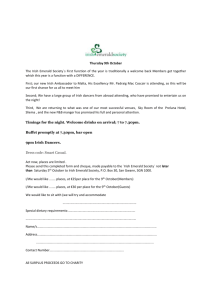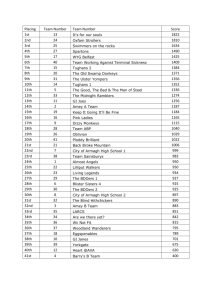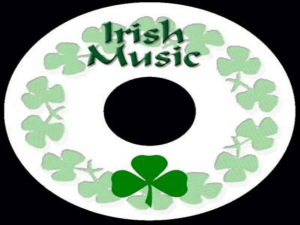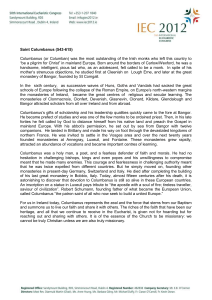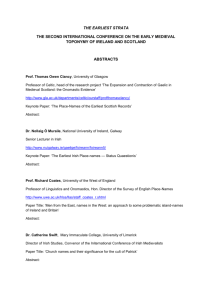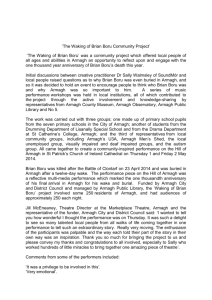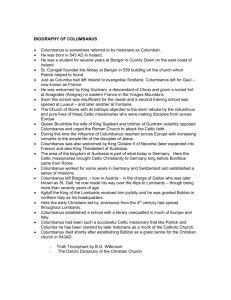HIS3060
advertisement
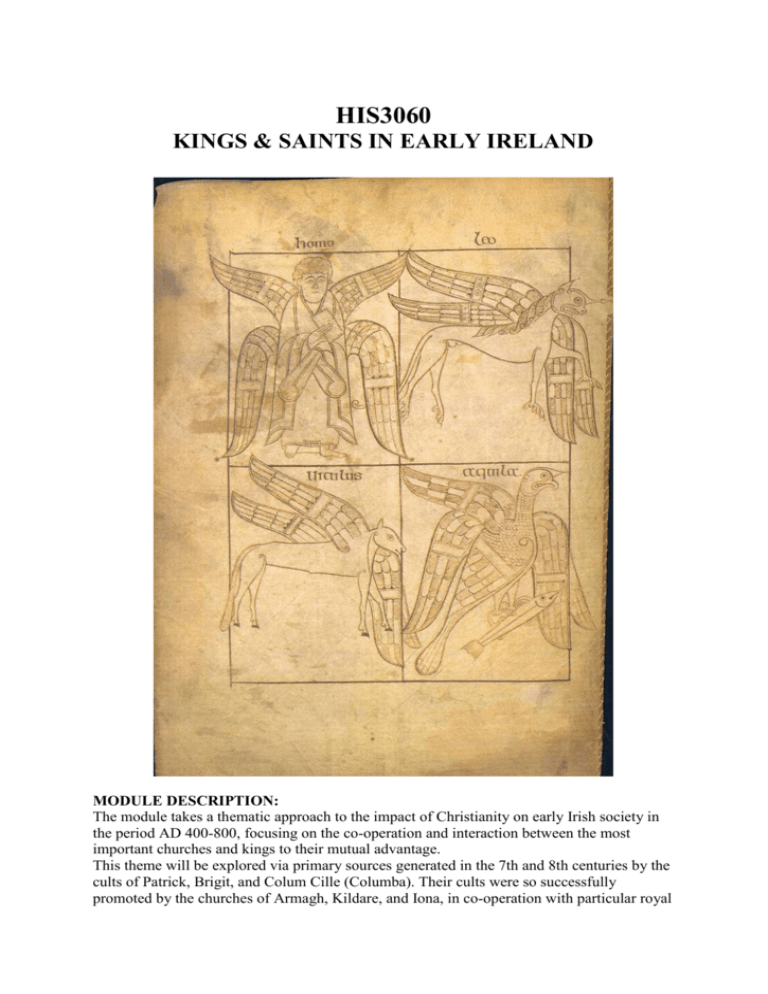
HIS3060 KINGS & SAINTS IN EARLY IRELAND MODULE DESCRIPTION: The module takes a thematic approach to the impact of Christianity on early Irish society in the period AD 400-800, focusing on the co-operation and interaction between the most important churches and kings to their mutual advantage. This theme will be explored via primary sources generated in the 7th and 8th centuries by the cults of Patrick, Brigit, and Colum Cille (Columba). Their cults were so successfully promoted by the churches of Armagh, Kildare, and Iona, in co-operation with particular royal dynasties, that those three saints/churches had secured the highest status in the early Irish church by c. 800, with the church of Armagh asserting an overall dominance or primacy. The seventh- and eighth-century Lives of Patrick, Brigit, and Colum Cille were sophisticated documents which exploited the new technology of writing introduced by Christianity and addressed a variety of audiences and purposes, and were so skilled in doing so that their impact is still discernible today. The Patrick of popular tradition, for example, who herded animals on Slemish, founded the church of Armagh, and was buried at Downpatrick, is the creation of, and testimony to, the skills of his seventh-century biographers. Hagiography, however, was not only produced in Ireland, but was also immensely popular among Ireland’s neighbours. One of the Irish saints, Columbanus, received a Life from the pen of the Italian hagiographer Jonas of Bobbio; this text is particularly interesting for the present module, as it outlines in detail Columbanus’ relation to the Merovingian regents. Also, hagiography flourished in Anglo-Saxon England in the second half of the seventh century; Irish influence on Anglo-Saxon culture and writing will therefore also be analysed in the present course, especially since one of the main events of seventh-century Anglo-Saxon England, the Synod of Whitby, sheds bright light on the relation between Northumbrian kings and Irish churches.



